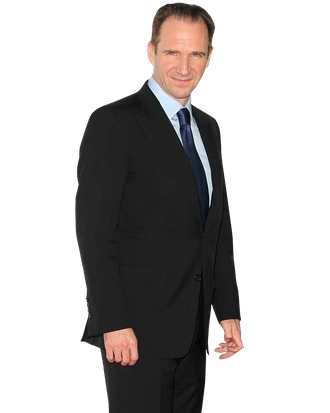
Ralph Fiennes steps behind the camera for the first time with Coriolanus, an adaptation of the eponymous Shakespearian drama set in the modern day. The story follows the rise and fall of Caius Martius (Fiennes), a haughty and mercurial Roman general whose mother (Vanessa Redgrave), wife (Jessica Chastain), and advisers (including Brian Cox) are all incapable of protecting him from the fickle affections of the Roman public. Fiennes talked to Vulture about the power of a face, his gripe with the term “theatrical,” and his behind-the-scenes learning curve.
Why did you want to direct this movie in particular? It’s your directorial debut, and the story was originally made for the stage.
I think it’s an extremely provocative political fable. People are saying this is especially true considering the demonstrations on Wall Street and the Arab Springs and blah blah blah, but it’s always relevant, the crisis of leadership, the crisis of authority. I think that’s with us all the time. I think it’s an exciting story and to set it onstage [as Shakespeare did] is actually quite difficult. In his later plays, Shakespeare gets quite ambitious in the type of worlds he’s asking his audience to imagine: the Roman senates, the marketplaces and streets. These are all things we think are a part of cinema, the scale and the context of the story. You can take a camera to the real place. Also, what film can do is get into the face of people, which you can’t do on stage. The landscape of the face — what the face of a human being can say is so much. So I sort of think that you get this political fable that’s always relevant, with this scale.
Part of the hook to John Logan’s script is that he didn’t update the language of Shakespeare’s play but rather transplanted it into a modern setting. Were you ever hesitant about taking such inherently theatrical language and resetting it into a new medium?
It’s a hot discussion, because what is “theatrical language”? Some of Shakespeare’s language is overtly heightened … the vocabulary in the sentence structure might not be how we speak today. But what is being said can be said over a cup of coffee, can be said while someone is making an omelette or brushing their teeth. I think that while acting styles change, particularly in terms of film actors’ sense of naturalism has over time, Shakespeare’s language could still work. We have all these labels about what’s “filmic” and what’s “theatrical,” and sometimes it’s interesting to challenge that understanding. There are theater performances I’ve seen that are intensely detailed and naturalistic and not at all what we’d call “theatrical.” And there are films that are, unashamedly, what we’d call “theatrical.”
Would you say your direction on set was intuitive?
Yes, completely. Completely intuitive.
It’s interesting to note that, apart from being the first film that you’ve directed, this is also your second credit as a producer. Have you ever considered producing before or taking a more active role in the creative process?
The other time I took a producing credit was for my sister’s film, Onegin, which I wasn’t very involved with creatively. So I got an executive-producing credit on that, I think? [Coriolanus] was something I initiated. The real nitty-gritty of producing, the smarts and balls you have to have — I find that very wearying. I was definitely involved in it, but I had other people doing the heavy lifting. I was sort of wheeled in when we did key meetings with financiers and distributors and things like that. I’d like to direct again, for sure. But sometimes the producing credit ends up in your lap because you’re involved. But the real producing is the negotiating and the money talk. That’s never going to be my strength [laughs].
Were you very hands-on in the editing process?
I was going on a huge learning curve because I’ve never been through the editing process. So I learned to become strong in my opinion as I saw what it was that was [being assembled in postproduction]. I had fantastic collaborators, but it was basically as simple as, “Oh, that scene works, phew, it makes sense.” And then, having gotten over the relief that it wasn’t a pile of poo, I could then start saying, “Well, we’re missing this.” I learned to say to [editor] Nick [Gastor], “That’s a good face,” and “I want this.” One of the things that I was always conscious of were faces in the crowd. Every face carries a story. So in the marketplace scene, where the tribunes are trying to rework the crowd — they’re completely real faces. They’re not actors, they’re people we used on the day. Some are actors and some are not. But their faces are absolutely crucial. They are the faces of people thinking, “What should we do?” That not-knowing-ness in the face is really important. You can do that on film.

